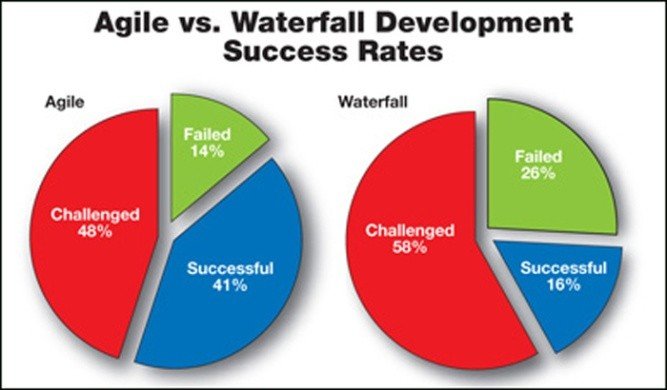In his mind-expanding book The Beginning of Infinity, physicist David Deutsch describes science and enlightenment as the quest for good explanations.
He explains how various ideas in human history represent a beginning of infinity that allows us to cope with any conceivable relevant application of these good explanations.
This idea of infinite reach or scope is true of an agile approach to development and not true of a waterfall-based approach.
An agile approach to software development encourages us to start work on solving problems in smaller pieces.
It encourages us to begin work before we know the answer to everything.
This approach allows us to make progress, maybe sometimes in suboptimal or even bad directions, but nevertheless, after each step, we learn something new.
This does not mean that agile thinking is perfect or the final answer.
Rather, it is an important, significant, enabling step in the direction of better performance.
|
|
The software product development method war is won.
Agile approaches as described in Agile Manifesto and Scrum are the winners
.
Eighty percent of all new software development initiatives are based on an agile approach.
The most used agile approach is Scrum.
Stop being a laggard.
Start using agile approaches and the Scrum framework.
|


